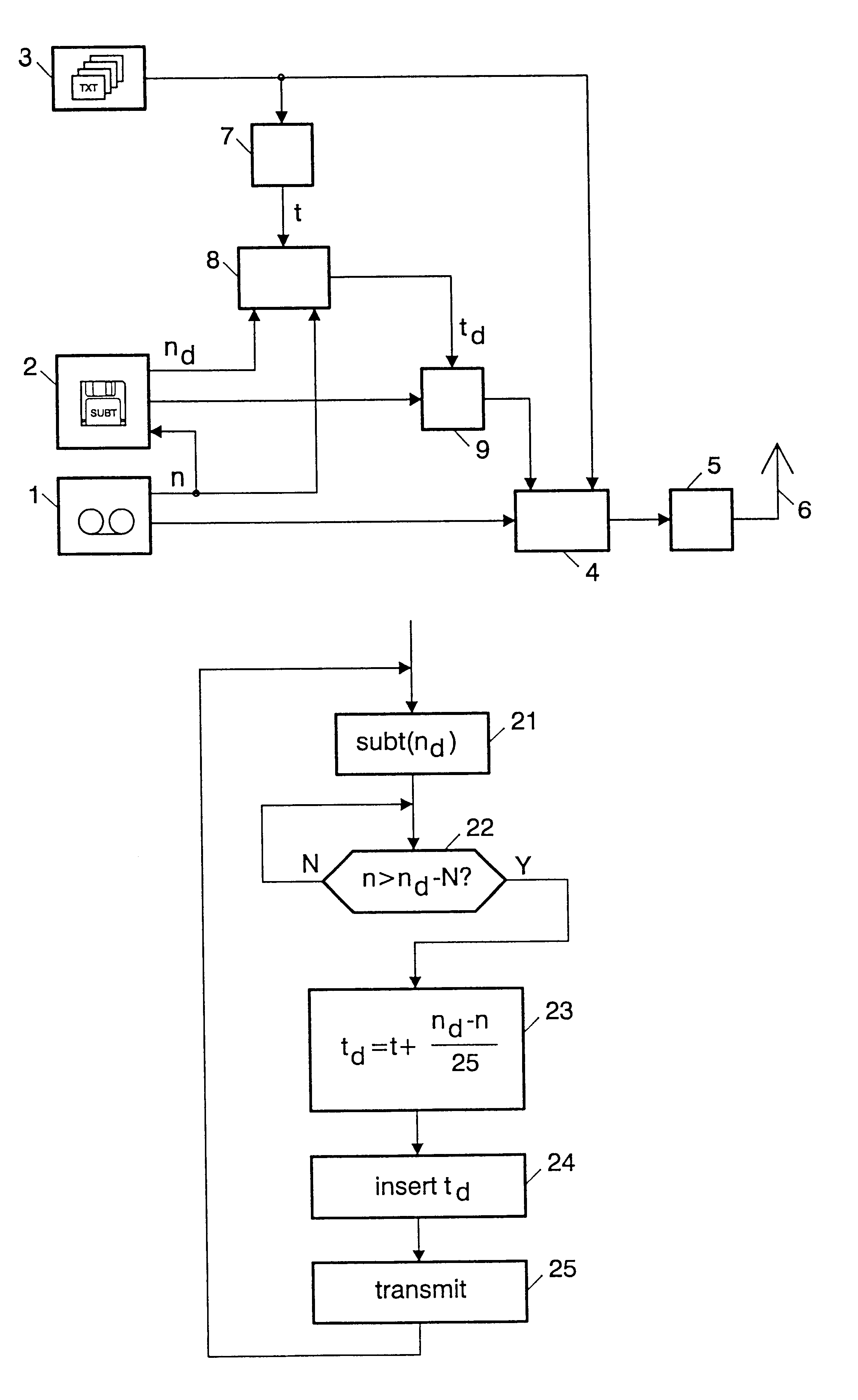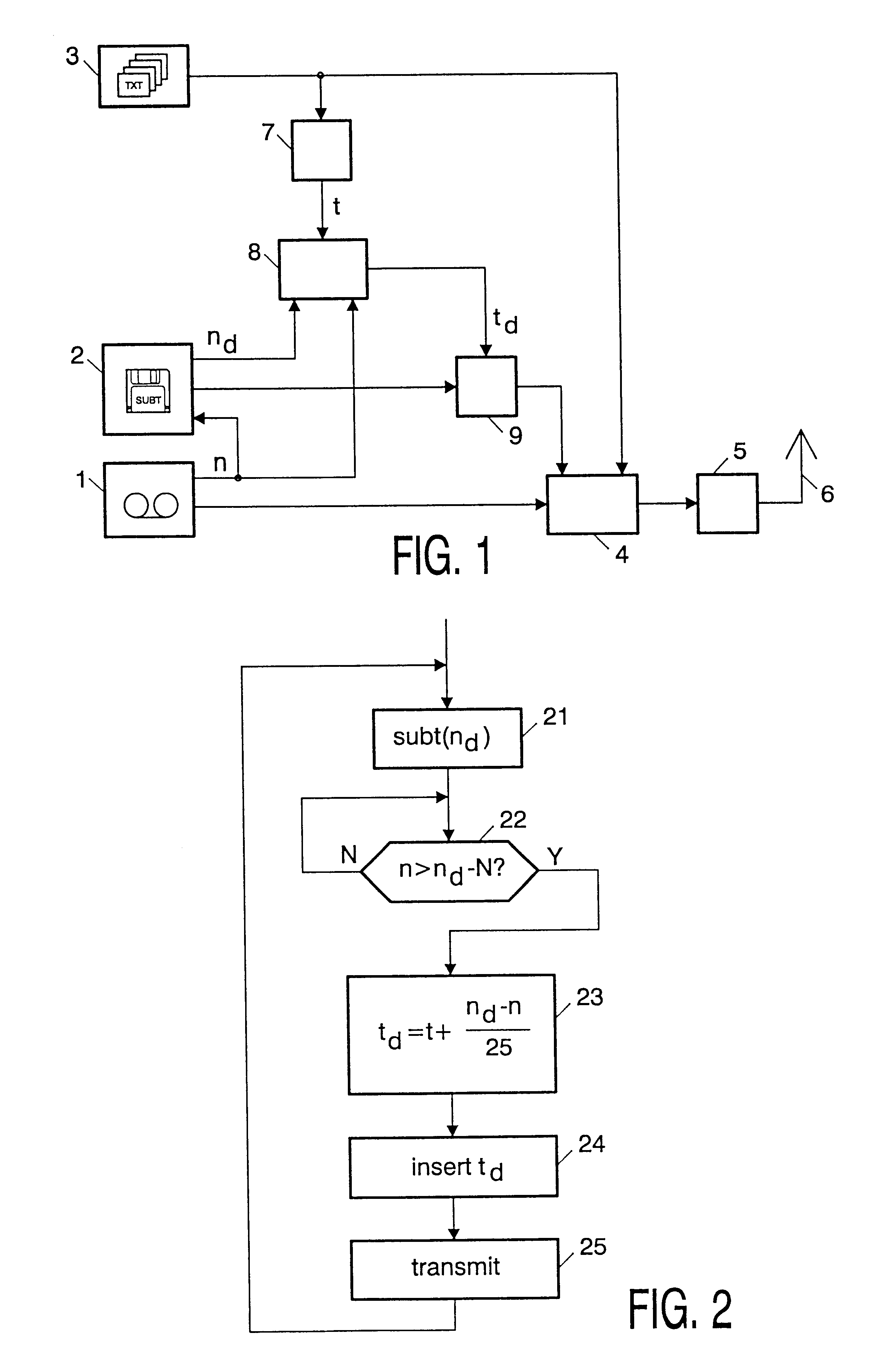Method and arrangement for transmitting and receiving encoded images
a technology of encoded images and transmission methods, applied in the direction of selective content distribution, signal generators with optical-mechanical scanning, television systems, etc., can solve the problems of insufficient bandwidth of the system (one or few lines of vertical blanking interval) to transmit all subtitles in real time, and more complex data service systems such as teleweb are being developed
- Summary
- Abstract
- Description
- Claims
- Application Information
AI Technical Summary
Benefits of technology
Problems solved by technology
Method used
Image
Examples
Embodiment Construction
FIG. 1 shows a schematic diagram of a transmitter in accordance with the invention. It will be assumed that the television program being broadcast is a prerecorded program, i.e. the content is being played back from a video recorder 1. The video frames of the recorded television signal are consecutively numbered. The video recorder outputs the current video frame number n at a second output.
The subtitles associated with the television program have been prepared in advance. They are stored in the form of encoded images on a subtitling computer system 2. The computer also stores for each subtitle image the frame number n.sub.d of the video frame at which the subtitle is to be reproduced. The subtitling computer 2 receives the current frame number n from the video recorder 1.
The transmitter further comprises a conventional teletext source 3, which generates a cyclic sequence of teletext pages. The conventional teletext service includes transmission of a real time clock. As is generally...
PUM
 Login to View More
Login to View More Abstract
Description
Claims
Application Information
 Login to View More
Login to View More - R&D
- Intellectual Property
- Life Sciences
- Materials
- Tech Scout
- Unparalleled Data Quality
- Higher Quality Content
- 60% Fewer Hallucinations
Browse by: Latest US Patents, China's latest patents, Technical Efficacy Thesaurus, Application Domain, Technology Topic, Popular Technical Reports.
© 2025 PatSnap. All rights reserved.Legal|Privacy policy|Modern Slavery Act Transparency Statement|Sitemap|About US| Contact US: help@patsnap.com



